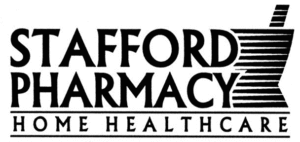Shingles (herpes zoster) Vaccination
Shingles (herpes zoster) is a painful viral infection caused by the virus that originally causes Chickenpox (varicella-zoster) that becomes reactivated later in life. As a result of a Chickenpox infection earlier in life, this virus remains dormant in the roots of the nerves. Not everyone who contracts Chickenpox will develop Shingles later in life, but approximately 1 in 3 North Americans develop shingles at some point in their life. Shingles affects most adults after 50 years of age, but can develop at any age.
Causes
It’s characteristically painful skin eruptions is due to the virus targeting nerves, most often on the lower back or sides but can affect any part of the body including the face, eyes, nose and mouth. The latent or “quite” infection caused by varicella-zoster can become active again, even many years after a person has had Chickenpox. This reactivation of the virus can occur when the immune system has been compromised in some way. This may be due to:
- older age
- illness
- use of medications that suppress the body’s immune system (e.g., corticosteroids)
- HIV infection or certain types of cancer
- cancer treatment
Unfortunately, it is often difficult to pinpoint exactly what triggered reactivation of the virus. A person with a shingles rash can pass the varicella-zoster virus onto someone who has not yet been infected with the virus, usually a child. However, the newly infected person would develop chickenpox, not shingles. Shingles occurs as a reactivation of the latent virus, not from “catching it” from someone who has shingles.
More information about Shingles
Vaccination
For those older adults (50 years and older), a Shingles vaccine is now available. This vaccine when administered can reduce the chances of developing shingles and if a person does still develops shingles, the intensity and the duration of the symptoms from the infection are much reduced. The vaccine also much reduces the risk of developing post-herpetic neuralgia, the most common complicatgion of shingles, affecting about 15% of shingles patients. This disorder is characterized by sever pain along the nerves affected by the herpes zoster virus is located, lasting several weeks, months or even years after the initial rash has disappeared. The cause of this neuralgia is not understood but can persist in some patients indefinitely.
Vaccines
Zostavax was the original shingles vaccine and is administered as a single subcutaneous injection of the vaccine. It is generally well tolerated with few adverse symptoms in the days following the vaccination. It is considered to be 70% effective in preventing a shingles infection after administration.
Shingrix is the more recent vaccine that requires two doses, an initial vaccination followed by a second injection in four to six months. Unlike Zostavax, this vaccine is an intra-muscular injection, much like the seasonal flu vaccination. Also unlike Zostavax, the Shingrix injection commonly results in soreness at the injection site and flu-like symptoms that begin 12 to 24 hours after the vaccination, lasting 24 to 48 hours. The reward for this discomfort is protection against shingles which is 95% effective.
Both vaccines must be prescribed by a physician, prescribing pharmacist or nurse practitioner.


